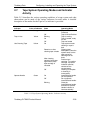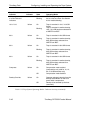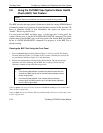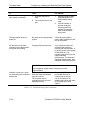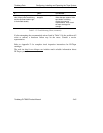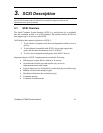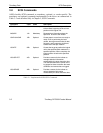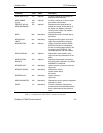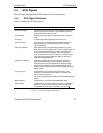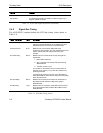Special offers from our partners!

Find Replacement BBQ Parts for 20,308 Models. Repair your BBQ today.

7DQGEHUJ'/73URGXFW0DQXDO
6&6,'HVFULSWLRQ
7KLVFKDSWHUSURYLGHVDGHWDLOHGGHVFULSWLRQRIWKHORJLFDOLQWHUIDFHVRIWKHWDSHGULYH7KH
GULYHLVIXOO\FRPSOLDQWZLWKWKH$16,6&6,VWDQGDUGIRUWDSHGULYHGHYLFHVDQG
LPSOHPHQWVPDQ\RSWLRQDOIHDWXUHV
6&6,2YHUYLHZ
The Small Computer System Interface (SCSI) is a specification for a peripheral
bus and command set that is an ANSI standard. The standard defines an I/O bus
that supports up to 16 devices (wide SCSI).
ANSI defines three primary objectives of SCSI-2:
1. To provide host computers with device-independence within a class of
devices
2. To be backward-compatible with SCSI-1 devices that support bus
parity and that meet conformance level 2 of SCSI-1
3. To move device-dependent intelligence to the SCSI-2 devices
Important features of SCSI-2 implementation include the following:
• Efficient peer-to-peer I/O bus with up to 16 devices
• Asynchronous transfer rates that depend only on device
implementation and cable length
• Logical addressing for all data blocks (rather than physical addressing)
• Multiple initiators and multiple targets
• Distributed arbitration (bus contention logic)
• Command queuing
• Command set enhancement



